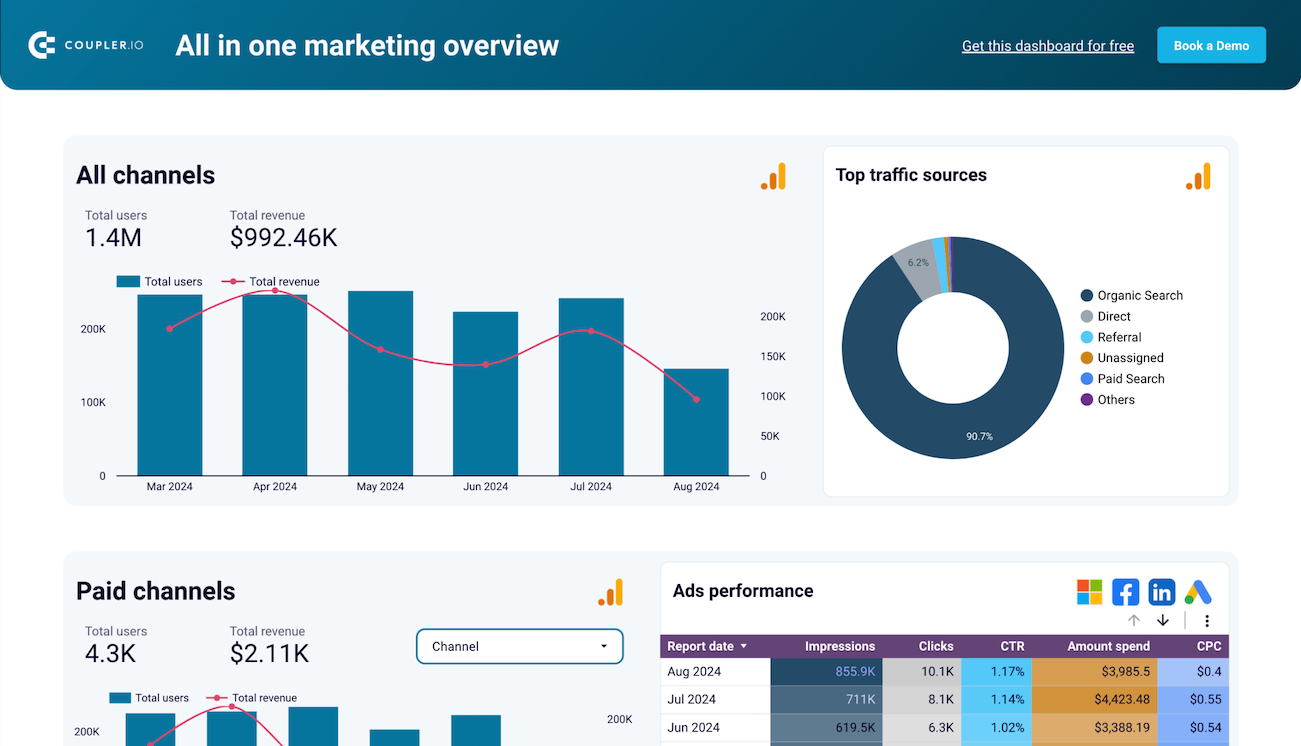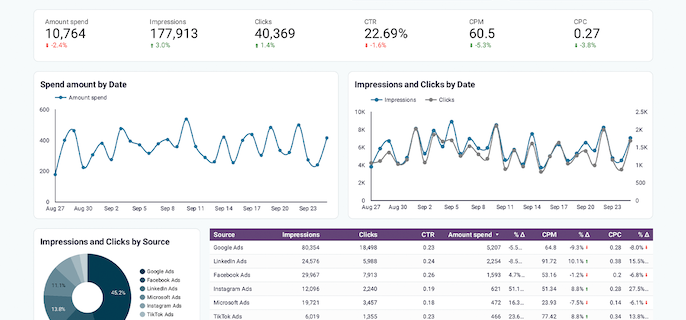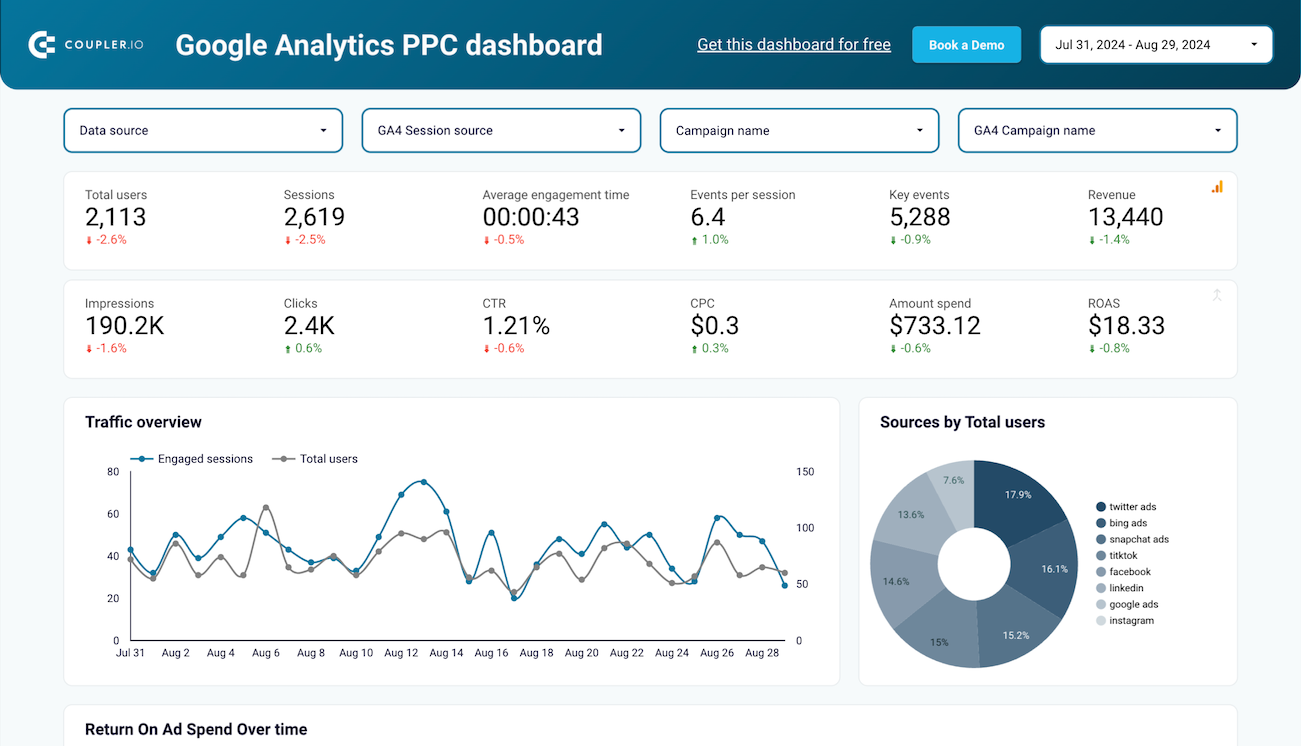What is a CPM?
Cost per mile (CPM) measures the cost to display an ad 1,000 times. This metric helps marketers gauge the cost-effectiveness of reaching potential customers. With CPM, you can compare the relative expense of advertising on different platforms. As a result, marketers can allocate their budgets effectively to maximize ad visibility and brand awareness. The analysis of CPM allows you to identify high-cost but low-performing campaigns.
How to calculate CPM?
To calculate cost per mile (CPM), divide the total cost of your advertising campaign by the number of impressions, then multiply the result by 1,000.


Our key templates to track CPM

Monitor all your marketing channels with an all-in-one dashboard providing performance overviews of web analytics, ad campaigns, SEO, social media, and emails.














Get a comprehensive PPC reporting tool to track the performance of your campaigns launched at multiple advertising platforms.










Get an overview of the traffic performance of your advertising campaigns launched across different PPC platforms.










How to improve CPM?










